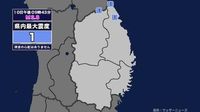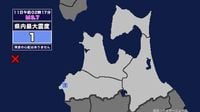On May 11, 2025, at 02:17 AM, an earthquake struck off the western coast of Aomori Prefecture, registering a maximum intensity of 1 on the Japanese seismic scale. According to the Japan Meteorological Agency, the quake had an estimated magnitude of 3.7, with its epicenter located approximately 10 kilometers beneath the ocean surface.
The tremors were felt most prominently in Fukaura Town, where residents reported the mild shaking characteristic of a level 1 event. Fortunately, there were no reports of damage or injuries, and the agency confirmed that there was no concern about a tsunami following the quake.
This earthquake adds to a series of seismic activities in the region, which has seen several minor quakes in recent days. Just the previous evening, on May 10, another earthquake was recorded at 09:43 PM, originating from the eastern offshore of Aomori Prefecture. That quake, with a slightly larger magnitude of 3.8, also registered a maximum intensity of 1, affecting areas in both Aomori and Iwate Prefectures.
In Iwate, residents in Kuji City, Iwaizumi Town, and Karumai Town experienced similar low-level shaking. The depth of that earthquake was significantly greater, at approximately 110 kilometers, which often leads to a more subdued surface impact.
The seismic activity in Aomori and Iwate Prefectures is not uncommon, given Japan's position along the Pacific Ring of Fire, an area known for its frequent earthquakes and volcanic activity. Experts emphasize the importance of preparedness, even for minor quakes, as they can serve as reminders of the potential for more significant seismic events.
In light of these recent occurrences, local authorities have reiterated the need for residents to stay informed about earthquake safety protocols. "It's crucial for everyone to know what to do during an earthquake, regardless of its intensity," said a spokesperson from the Aomori Prefectural Office. "Being prepared can make all the difference in ensuring safety during unexpected seismic events."
As Japan continues to face the realities of living in an earthquake-prone region, the government and various organizations are committed to enhancing public awareness and response strategies. Educational campaigns and drills are regularly conducted to ensure that the population is equipped to handle emergencies.
Despite the minor nature of these recent quakes, they serve as a reminder of the dynamic geological processes at play beneath Japan's surface. The country experiences thousands of earthquakes each year, most of which go unnoticed by the general population.
In conclusion, while the recent earthquakes in Aomori Prefecture have not caused any significant disruption, they highlight the ongoing seismic activity in the region and the importance of preparedness in the face of natural disasters.





